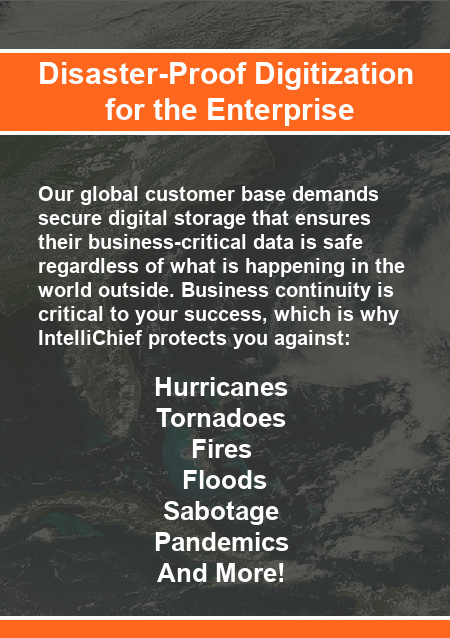We live in an unpredictable world. Hurricanes, floods, and other disasters can instantly derail a business. But, these events are rare – which means that many companies fail to think about topics such as disaster recovery, data protection, and business continuity.
This isn’t exactly a winning proposition – it’s more like an incredibly risky gamble. But, companies that invest in electronic records management don’t have to spend their time or effort thinking about “what if” situations. They can effortlessly prevent the loss of documents and data, simply by moving to digital storage.
Fire, Flood, Hurricane, and Tornado-Proof Document Management
Instead of storing your most important business documents in a filing cabinet or closet, you can have electronic copies instantly saved in an electronic archive. Document imaging software converts your paperwork in seconds, and your data is protected for life – no matter what Mother Nature throws your way.
So what does it take to protect your paper files? With the right document management system, it only takes seconds to scan in and archive your company’s physical records. (Any basic office scanner will do the trick.) Each file is categorized and saved in a central electronic repository – with routine back-ups keeping everything up-to-date.
And because today’s approach to business involves many different types of communication? The most comprehensive document storage systems offer solutions for emails, PDFs, and even new documents that are generated by your ERP – which means that you don’t have to worry about content getting lost on disassociated servers, platforms, and machines. You can capture everything you need to preserve, in any format, across your entire organization.
Digital Record Management vs. Off-Site Document Storage
To keep their content secure, some companies invest in off-site document storage. But being realistic: most companies choose off-site storage services that are located nearby, as it’s much easier to retrieve documents when they’re needed if your vendor is located in your same city and state. If a large storm comes through, it’s likely to impact an entire geographical area – which means that off-site documents are just as likely to be affected.


